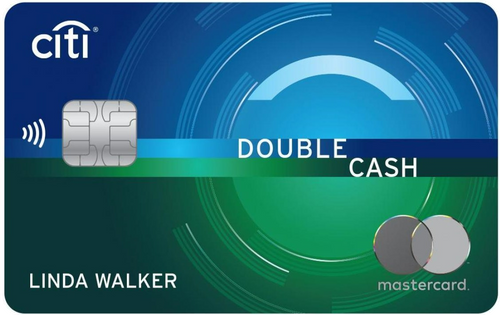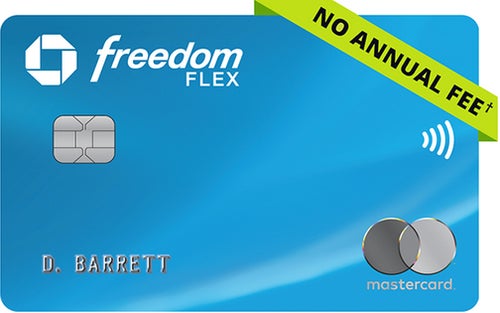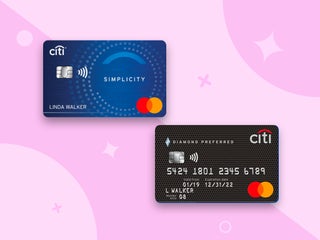Summary
Which rewards card is better, the Citi Double Cash or Chase Freedom Flex? It depends on whether you prefer flat-rate cash back or higher cash back rates in specific spending categories.
The content on this page is accurate as of the posting date; however, some of our partner offers may have expired. Please review our list of best credit cards, or use our CardMatch™ tool to find cards matched to your needs.
Want to earn cash back rewards and score a lengthy balance transfer offer? The Citi Double Cash® Card and Chase Freedom Flex® represent two of the best cash back and balance transfer credit cards on the market. But to determine the right card for your spending style, you need to take a good look at what each card has to offer.
Not all cash back credit cards are created equal, and the Citi Double Cash and Chase Freedom Flex provide different ways to earn and spend valuable cash back rewards. The Double Cash Card offers a simple way to earn flat-rate cash back, while the Freedom Flex offers higher bonus rates in specific areas, including travel booked through Chase Ultimate Rewards and gas station purchases.
Interested in seeing which card makes more sense for you? Keep reading for a complete breakdown of rewards, features and annual fees for the Citi Double Cash and Chase Freedom Flex.
Comparing card features: Citi Double Cash Card vs. Chase Freedom Flex
| Card |  Citi Double Cash® Card |  Chase Freedom Flex® |
| Rewards rate |
|
|
| Sign-up bonus | None | $200 cash bonus after spending $500 in the first 3 months |
| Intro APRs | 0% intro APR on balance transfers for 18 months (16.24% to 26.24% variable APR thereafter) | 0% intro APR on purchases and balance transfers for 15 months (16.49% to 25.24% variable APR thereafter) |
| Annual fee | $0 | $0 |
Earning cash back
The Citi Double Cash Card and Chase Freedom Flex both earn cash back, but in different ways. The Double Cash Card offers one of the most unusual cash back structures around. You can earn an unlimited 1% cash back on general purchases, plus an additional 1% back when you pay off those purchases – essentially earning you an unlimited 2% cash back, as long as you pay your bill. Overall, there are no bonus categories to track.
The Chase Freedom Flex earns different bonus rates depending on the category. This Chase credit card rewards spending in several popular categories like gas, travel, dining and drugstore purchases. It also earns 5% cash back on up to $1,500 spent in quarterly, rotating bonus categories, and a flat rate of 1% cash back on all non-category purchases. Keep in mind that you’ll need to activate bonus categories to earn the higher bonus rate.
Depending on your spending habits, you could earn considerable rewards with the Freedom Flex. The Citi Double Cash, however, earns flat-rate cash back that doesn’t require jumping through hoops or tracking every purchase.
Welcome bonuses
Not only do these two cards earn cash back differently, they also vary in sign-up bonuses. That’s because the Citi Double Cash Card doesn’t offer a sign-up bonus.
On the other hand, the Chase Freedom Flex offers $200 cash back after spending $500 on your card in the first three months from account opening – a solid sign-up bonus considering the low spending requirement.
If you like the idea of earning additional cash back (after required spending) right out of the gate, the Chase Freedom Flex is the better option.
Redeeming rewards
Both cards offer several ways to redeem cash back rewards, but the number of ways you can redeem rewards with the Citi Double Cash Card, in particular, is impressive.
Options include statement credits, direct deposit and paper check by mail. You can also convert your cash back to Citi ThankYou points, which opens up more options.
Through the ThankYou rewards program, you can use your points to buy gift cards, book travel, pay bills or shop online, share your points with other members or donate to charity. There’s even a way to use your points to make payments on your mortgage or student loans. Last, you only need a minimum of $1 cash back rewards to transfer points to the ThankYou rewards program.
Keep in mind that when you convert Citi Double Cash rewards to ThankYou points they are considered “basic,” which means that you cannot transfer them to a Citi travel partner (unless you also own a premium Citi credit card).
The Chase Freedom Flex offers several ways for cardholders to redeem their cash back. Options include statement credits or direct deposits into most checking or savings accounts. Plus, there’s no minimum redemption requirement. You can redeem your cash back rewards at any time or save them up for a specific redemption.
You can also use cash back you earn with your Freedom Flex card to pay for Amazon purchases, redeem for gift cards or book travel through Chase Ultimate Rewards. The Chase Freedom Flex definitely offers more flexibility when it comes to redeeming cash back rewards.
Annual fee
The Citi Double Cash Card and Chase Freedom Flex are no-annual-fee credit cards. Having to pay annual fees often cuts into the value of a rewards credit card, but that’s not the case with these.
Introductory APRs
Introductory offers allow consumers to transfer credit card debt or make new purchases without paying costly interest charges. Both the Citi Double Cash Card and Chase Freedom Flex offer lengthy introductory 0% APR offers. As one of the top benefits of the Citi Double Cash, you receive an introductory 0% APR for 18 months on balance transfers (followed by a variable APR between 16.24% to 26.24%). If you have existing credit card debt, you can transfer the balance to your Citi card and pay it off over a year and a half without any interest charges.
The Chase Freedom Flex offers a slightly shorter introductory APR offer, but it covers both balance transfers and new purchases made with your card. You receive an introductory 0% APR for 15 months on balance transfers and purchases (followed by a 16.49% to 25.24% variable APR).
Like most balance transfer credit cards, there are balance transfer fees to consider. Both cards charge a $5 or 3% balance transfer fee, whichever is greater. But for the Chase Freedom Flex, in particular, the 3% fee bumps up to 5% after your first 60 days of card ownership.
Citi Double Cash Card: Best for flat-rate cash back
If you want to earn decent cash back rewards but don’t want to waste time activating bonus categories or tracking your spending, the Citi Double Cash Card may be worth it for you. Not only can you earn up to 2% cash back on all purchases (1% as you buy and an additional 1% as you pay), you can also take advantage of a long, 0% interest offer on balance transfers.
Chase Freedom Flex: Best for bonus cash back rates
If 2% cash back just isn’t enough, the Chase Freedom Flex is an excellent cash back credit card choice that earns rewards in several popular spending categories. Just be sure to take note of the card’s spending caps and category expiration dates. If your spending habits line up with the Chase Freedom Flex bonus categories, the Freedom Flex is certainly worth it and can help you earn considerable rewards every time you use your card.
Bottom line
The Citi Double Cash and Chase Freedom Flex both offer consumers a chance to earn valuable cash back rewards. Because they offer such varied structures, a quick look at your spending habits should guide you to the best card to maximize your rewards earning potential.
Don’t overlook the lengthy intro APR offers that come with both the Double Cash Card and Freedom Flex. They offer the same fee structure, but the Citi Double Cash offer is slightly longer, while the Chase Freedom Flex covers both balance transfers and purchases.
Determine your needs to see which offer is best for you. Whichever card you choose, you’ll have plenty of options for redeeming your cash back rewards.
Editorial Disclaimer
The editorial content on this page is based solely on the objective assessment of our writers and is not driven by advertising dollars. It has not been provided or commissioned by the credit card issuers. However, we may receive compensation when you click on links to products from our partners.




